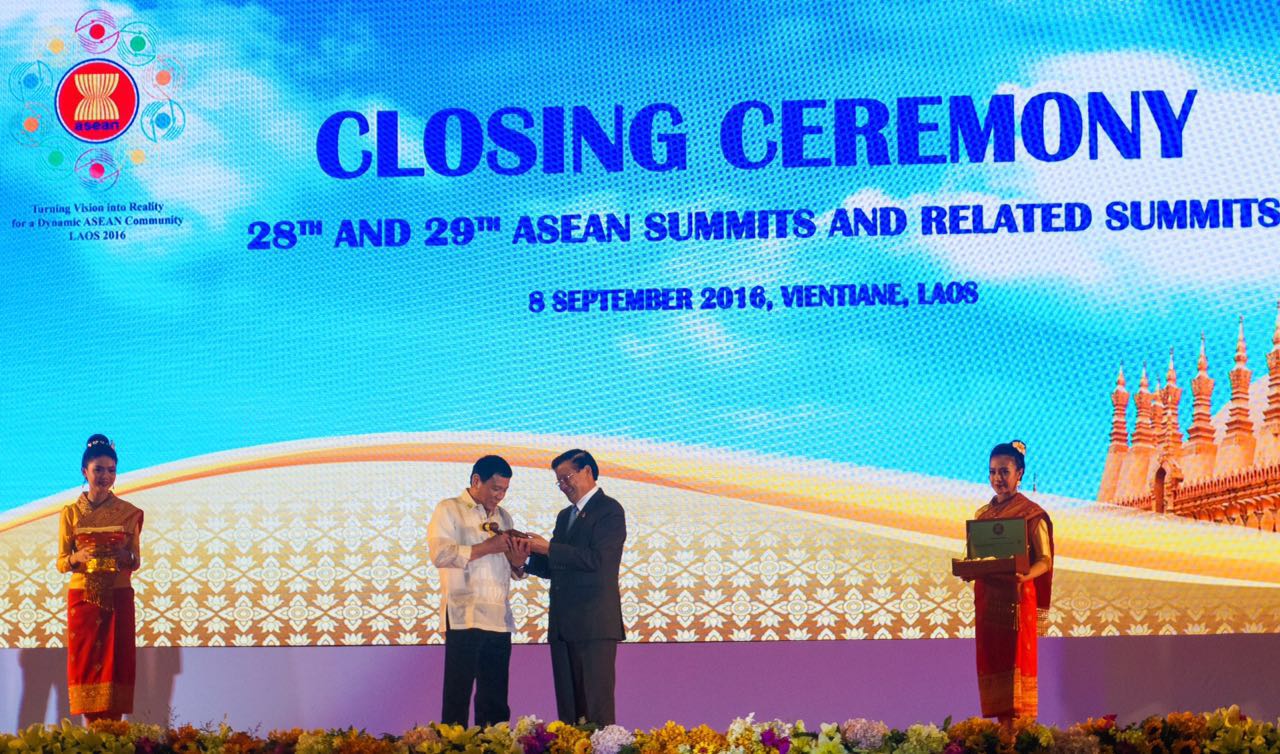Editorial: The judgement on the success of high-level summits is ultimately a subjective exercise. But if two key measures were agreements on collective priority areas that set the stage for future collaboration and a common declaration on pressing international issues, including the South China Sea, then the 28th & 29th ASEAN and Related Summits under the chairmanship of Laos were a success.
First, under the initiative of the Lao Government as the 2016 Chair of ASEAN, the association during its back-to-back Summits among the ten ASEAN member states concluded a number of declarations. For example, in the face of climate change and disasters plaguing the region and the world, ASEAN agreed on the “One ASEAN, One Response” approach to tackling disasters. Others include the Vientiane Declarations on transition from informal to formal employment and decent work, reinforcing cultural heritage, Master Plan on ASEAN Connectivity 2025, and the Initiative for ASEAN Integration Work Plan III.
Another important milestone recorded under the ASEAN summits with Laos in the driver seat was the adoption of important ASEAN frameworks, especially on trade facilitation, food safety regulation, as well as access to finance for micro-, small and medium enterprises (MSME). These frameworks will serve as key reference points for future collaboration and work plan – a legacy that the Laos chairmanship can be proud of.
Second, in the Summits with their partners, Laos pushed for cooperation on sustainable development, in particular the need of infrastructure development – a high priority area for ASEAN in its regional integration agenda. Here, Vientiane succeeded in leading the ASEAN Plus Three Summit (with Japan, China and South Korea) to promote Sustainable Development Cooperation and the East Asia Summit (including with the United States, China, Japan, Russia, Australia, and India) to agree on the Declaration on Promoting Infrastructure Development Cooperation in East Asia.
Last but not least, with world powers and their leaders present in its small but charming capital, Laos pulled out all tricks of the diplomatic trade and skilfully steered the course for an outcome that everyone could live with. This can be seen in the Chairman’s Statement for the East Asia Summit on burning international issues such as the South China Sea. Here, the Lao chair had the enormous challenge of balancing the varying interests of the United States and some ASEAN member states (especially Vietnam and Philippines which called for recognition of the recent UN court ruling) and China and others.
Capitalizing on the recent agreed joint communique of the ASEAN Foreign Ministers Meeting in July, Laos issued a Chairman’s Statement that all major powers and players found generally acceptable. As one diplomat put it: “there was a lot of wisdom in the way the Chair came up with the formula on this highly complex and sensitive issue.”
In all, Lao foreign policy and international stature have entered a new era after the ASEAN summits. Credit must go to the whole Lao delegation under the new leadership led by President Bounnhang Vorachith and government led by Prime Minister Thongloun Sisoulith, the ministers responsible respectively for the three ASEAN pillars of political-security, socio-cultural and economic – Foreign Minister Saleumxay Kommasith, Industry & Commerce Minister Khemmani Pholsena, and Information, Culture & Tourism Minister Bosengkham Vongdara, and the Prime Minister’s Office Minister Alounkeo Kittikhoun, who also served as Laos’ ASEAN Senior Officials Leader.
Written By: Laotian Times Editors
Photo Credit: asean.org



